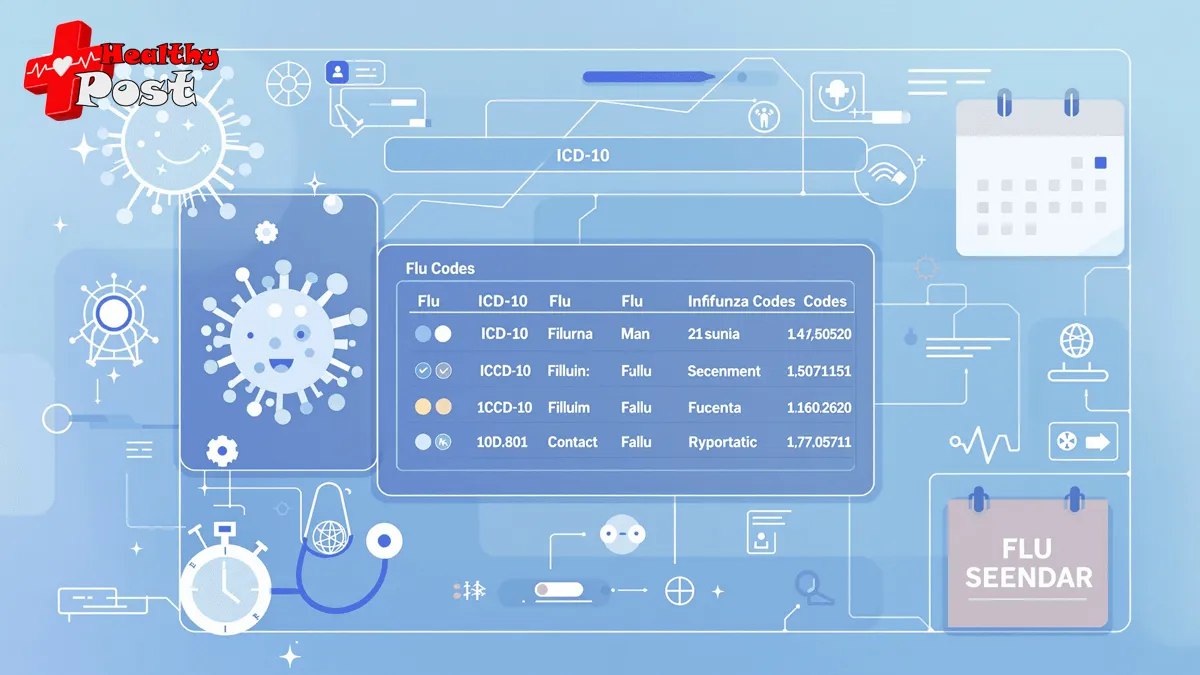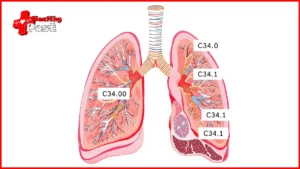
Top 7 Critical Facts About Flu ICD 10 That Could Save Lives
Flu ICD-10 codes are essential in modern healthcare. They do more than just categorize illnesses – they play a crucial role in improving patient care and tracking diseases, ultimately saving lives.
In flu cases, the correct ICD-10 code can be a matter of life or death. Healthcare providers rely on these codes for various purposes:
- Tracking flu outbreaks as they happen
- Making swift and precise treatment choices
- Communicating important patient information between facilities
- Observing trends in public health
Did you know? A single incorrectly coded flu case can have a widespread impact by distorting public health data and response strategies, affecting thousands of lives.
By understanding key facts about Flu ICD-10, healthcare workers can:
- Recognize early signs of epidemics
- Identify populations at higher risk
- Plan targeted vaccination campaigns
- Allocate medical resources efficiently
The stakes are high – accurate flu coding directly influences patient survival rates. When healthcare providers fully grasp these seven critical facts about Flu ICD-10, they acquire powerful tools to safeguard their communities.
Let’s delve into these life-saving facts that every healthcare professional must know regarding Flu ICD-10 coding.
Fact 1: Seasonal Nature of Influenza
Influenza hits our communities like clockwork each year. This acute viral infection targets the respiratory system with specific timing patterns.
The flu virus spreads through tiny droplets when infected people cough, sneeze, or talk. These key symptoms often appear:
- High fever
- Body aches
- Severe fatigue
- Cough
- Sore throat
Flu season follows a predictable yearly cycle in temperate regions. The virus thrives in cold, dry air conditions.
Peak flu activity typically occurs between:
- Late autumn (October-November)
- Winter months (December-February)
- Early spring (March)
Different regions experience varying intensity levels of flu outbreaks. The Southern Hemisphere sees peak activity during their winter months (June-August).
The seasonal nature of influenza allows healthcare providers to prepare for increased cases. This knowledge helps:
- Stock medical supplies
- Schedule staff appropriately
- Plan vaccination campaigns
- Alert high-risk patients
Temperature and humidity changes affect how long flu viruses survive in the environment. Cold weather drives people indoors, creating perfect conditions for virus transmission.
CDC data shows flu activity can begin as early as October. Most cases cluster between December and February in the United States.
Fact 2: Importance of Flu Vaccination
The Advisory Committee on Immunization Practices (ACIP) sets clear guidelines for flu vaccination in the United States. Their research shows flu shots can cut the risk of flu-related death by 45%.
Who Should Get Vaccinated?
ACIP recommends yearly flu shots for:
- All people aged 6 months and older
- Pregnant women
- Adults over 65
- People with chronic health conditions
- Healthcare workers
- Caregivers of high-risk individuals
The Impact of Influenza
The disease burden from flu remains significant:
- 140,000 to 710,000 hospitalizations yearly
- 12,000 to 52,000 deaths annually
- $10.4 billion in direct medical costs
- $16.3 billion in lost earnings
How Vaccination Benefits Everyone
Flu vaccination helps protect both individuals and communities through herd immunity. The CDC data shows vaccinated people who still get sick experience:
- Shorter illness duration
- Less severe symptoms
- Lower risk of hospitalization
- Reduced chance of ICU admission
The Importance of Vaccination for Children
Children benefit greatly from flu shots, with studies showing:
- 74% lower risk of ICU stays
- 41% lower risk of flu-related emergency visits
- 82% reduced risk of life-threatening complications
Timing is Key: When to Get Vaccinated
Getting vaccinated early in the flu season maximizes protection during peak infection periods. The ideal time for vaccination falls between September and October.
Fact 3: Tracking Flu Cases with ICD-10 Codes
ICD-10 coding creates a vital tracking system for flu cases across healthcare facilities. These codes help medical professionals record specific details about each flu case with precision.
The annual impact of flu in the US reveals shocking numbers:
- 226,000 hospitalizations each year
- 3,000 to 49,000 deaths from flu complications
- Millions of doctor visits during flu season
Accurate Flu ICD 10 coding enables health departments to:
- Spot flu outbreak patterns
- Track virus mutations
- Identify high-risk areas
- Plan resource distribution
- Monitor treatment effectiveness
Public health officials use this data to make quick decisions about:
- Vaccine distribution
- Hospital bed allocation
- Medical supply stockpiling
- Staff deployment
- Emergency response planning
Real-time tracking through ICD-10 codes helps detect unusual patterns. A spike in flu cases might signal the start of an epidemic. This early warning system lets healthcare providers prepare and respond faster.
The CDC uses these codes to map flu activity across different regions. This data helps predict where outbreaks might occur next. Healthcare facilities can then stock up on necessary supplies before they’re needed.
Fact 4: Detailed Coding Guidelines for Influenza
ICD-10-CM guidelines provide specific codes to identify different types of influenza infections. The coding system uses J09-J11 categories to classify flu cases based on virus strains.
Here’s a breakdown of the main coding categories:
- J09: Influenza due to identified novel influenza A virus
- J10: Influenza due to other identified influenza virus
- J11: Influenza due to unidentified influenza virus
Medical coders must add extra digits to these base codes for enhanced specificity:
- Fourth digit: Identifies the presence of pneumonia
- Fifth digit: Shows other respiratory manifestations
- Sixth digit: Indicates other manifestations
The coding system requires documentation of these key elements:
- Type of influenza virus (if identified)
- Presence of complications
- Site of manifestation
- Severity of symptoms
Healthcare providers use specific modifiers to indicate:
- Seasonal vs. pandemic flu
- Confirmed vs. suspected cases
- Primary vs. secondary diagnoses
Accurate coding helps track disease patterns, allocate resources, and guide treatment decisions. Proper code assignment impacts:
- Insurance reimbursement rates
- Public health surveillance
- Research data quality
- Patient care coordination
Medical facilities must maintain updated coding guidelines to reflect new virus strains and emerging complications.
Fact 5: Collaboration and Documentation in Flu Diagnosis Coding Under HIPAA Regulations
Healthcare providers and medical coders need to work as a team to handle flu diagnosis coding. This teamwork helps create accurate health records under HIPAA rules.
Key Elements of Provider-Coder Collaboration:
- Clear notes about flu symptoms
- Detailed patient health history
- Test results and findings
- Treatment plans and changes
- Patient response to care
HIPAA rules require strict protection of patient health data. Medical staff must follow these rules when sharing flu diagnosis info:
“Every piece of flu-related information needs proper documentation to support the assigned ICD-10 codes” – HIPAA Guidelines
Best Practices for Documentation:
- Write down specific flu strain types
- Record all symptoms clearly
- Note any complications
- Track treatment progress
- Document vaccination status
Good team communication helps catch coding errors early. Regular meetings between doctors and coders can solve common coding problems.
Medical coders check provider notes to pick the right flu codes. They ask doctors to fill in missing info when needed.
Proper coding affects:
- Insurance payments
- Patient care quality
- Disease tracking
- Research accuracy
Strong partnerships between providers and coders create better health outcomes. This team approach helps protect both patients and healthcare facilities.
Fact 6: Performance Measures in Hospital Settings
Hospitals track immunization status screening as a key performance measure to save lives. This practice helps identify patients who need flu vaccines during their stay.
Key Performance Indicators for Flu Prevention:
- Daily screening of patient vaccination history
- Documentation of vaccine administration
- Tracking of patient acceptance rates
- Monitoring of staff compliance with screening protocols
The Centers for Medicare & Medicaid Services requires hospitals to screen all eligible patients for flu vaccines. This rule applies to patients aged 6 months and older during flu season.
Successful hospitals implement these practices:
- Automatic screening alerts in electronic health records
- Regular staff training on vaccine protocols
- Real-time tracking of vaccination rates
- Monthly performance reviews
A structured approach to vaccine administration helps protect vulnerable patients:
- Morning rounds include vaccination checks
- Bedside nurses document immunization status
- Pharmacy maintains vaccine inventory levels
- Quality teams monitor compliance rates
Hospitals that excel in performance measures show lower rates of flu transmission. These facilities create safer environments for patients through systematic screening and timely vaccination.
Data shows hospitals with strong performance measures prevent up to 80% of flu cases among patients. This success stems from consistent screening and quick vaccine delivery to eligible patients.
Fact 7: Targeted Interventions Based on Data Analysis
ICD-10 coding accuracy shows notable differences across high-risk populations. Data reveals specific patterns in patients with:
- Diabetes
- COPD (Chronic Obstructive Pulmonary Disease)
- Heart conditions
- Weakened immune systems
These variations create gaps in healthcare delivery and patient outcomes. Studies show that diabetic patients face a 30% higher risk of flu complications.
Healthcare providers use ICD-10 data to spot vaccination disparities in different groups:
- Geographic locations
- Age brackets
- Socioeconomic status
- Medical conditions
This information shapes targeted interventions for at-risk groups through:
- Personalized outreach programs
- Mobile vaccination clinics
- Educational campaigns in multiple languages
- Special accommodations for disabled patients
Recent data analysis helped identify a 40% vaccination gap in rural communities with chronic health conditions. Healthcare teams now use this insight to create specialized programs.
Hospitals implement custom strategies based on local population needs:
- Extended clinic hours
- Transportation assistance
- Home vaccination services
- Multilingual health resources
These data-driven approaches have increased vaccination rates by 25% among high-risk patients in participating healthcare systems.
Conclusion
Understanding these Top 7 Critical Facts About Flu ICD 10 creates a powerful impact on healthcare outcomes. Accurate ICD-10 coding strengthens public health surveillance and enhances patient care management.
The data-driven insights from proper coding help:
- Track vaccination rates in high-risk populations
- Identify gaps in healthcare delivery
- Guide resource allocation for flu prevention
- Support targeted intervention strategies
These improvements in flu tracking and prevention directly contribute to reducing morbidity and mortality rates. Healthcare providers who master these ICD-10 coding practices protect their patients and strengthen community health defenses against influenza outbreaks.
By implementing these critical facts, healthcare facilities can build stronger flu prevention programs and save countless lives through improved vaccination efforts.
FAQs (Frequently Asked Questions)
What is the significance of accurate flu ICD-10 coding in public health?
Accurate flu ICD-10 coding is crucial for tracking flu cases, hospitalizations, and deaths, enabling effective public health surveillance and improving patient care management to reduce influenza-related morbidity and mortality.
Why is understanding the seasonal nature of influenza important for ICD-10 coding?
Recognizing the seasonal patterns of influenza, especially peak activity in late autumn and winter, helps healthcare providers apply precise ICD-10 codes during outbreaks, facilitating timely diagnosis and treatment.
How do ACIP recommendations influence flu vaccination efforts?
The Advisory Committee on Immunization Practices (ACIP) provides guidelines targeting populations at risk, promoting widespread flu vaccination to reduce the high disease burden associated with influenza.
What role does collaboration between healthcare providers and coders play under HIPAA regulations?
Collaboration ensures accurate documentation and proper flu diagnosis coding while maintaining patient privacy under HIPAA regulations, leading to precise ICD-10 coding essential for effective treatment and data analysis.
How are performance measures related to flu immunization implemented in hospitals?
Hospitals track influenza immunization status as a performance measure by screening patients aged 6 months and older for vaccine administration, emphasizing preventive care to reduce flu complications.
In what ways does data analysis of ICD-10 coding support targeted interventions for high-risk groups?
Analyzing variations in ICD-10 coding accuracy among high-risk populations like diabetes or COPD patients helps identify vaccination disparities, enabling healthcare systems to develop targeted interventions that improve immunization rates and patient outcomes.

